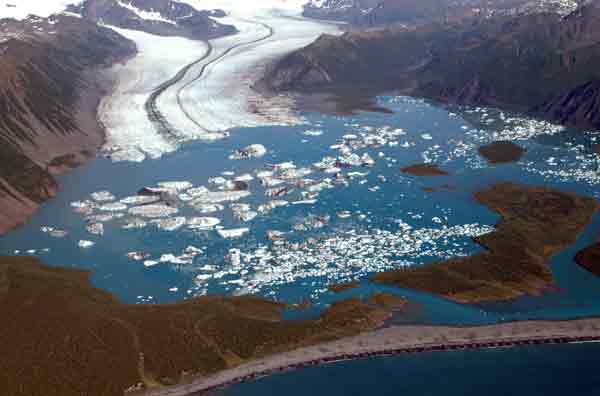
New York, US (BBN) - State governments will serve as an important bulwark against any attempt by President-elect Donald Trump to roll back the progress the United States has made in addressing climate change.
And that’s good news for the planet, according to an editorial of The New York Times.
Over the last decade or so, most states have reduced their greenhouse gas emissions by promoting energy efficiency and renewable fuels.
These trends should continue as clean energy costs continue to decline and, in some parts of the country, fall below the cost of dirtier fuels like coal.
The Brookings Institution reported this month that between 2000 and 2014, 33 states and the District of Columbia cut carbon emissions while expanding their economies.
That list includes red states run by Republican legislatures, like Alaska, Georgia, Tennessee and West Virginia.
It’s hard to know how Trump will change climate policy, but it is almost certain that he won’t advance it.
He told The Times last month that he has an “open mind” about climate change, but has also called it a “hoax.”
The people he has chosen to lead the Environmental Protection Agency, the Department of Energy and the Department of Interior — the three agencies with the greatest influence on energy policy — have either denied or expressed skepticism that human activity is causing global warming, something that virtually all scientists agree on.
And many people expect him to walk away from President Obama’s commitments under the Paris climate agreement and get rid of or weaken the EPA’s Clean Power Plan, which requires states to lower carbon emissions from the electricity sector.
He and his appointees might also try to water down fuel economy regulations for cars and trucks, and cut clean energy tax incentives and research spending.
States could blunt much of that damage.
Even now, many states will be able to meet the Clean Power Plan’s targets by following through on planned investments and increasing energy efficiency, according to M J Bradley and Associates, a research and consulting firm.
Some populous states have set targets that are even more ambitious and appear to be on track to meet them.
California and New York plan to cut greenhouse gas emissions to 40 percent below 1990 levels by 2030.
Hawaii hopes to get all of its electricity from renewable sources by 2045.
This month, Charlie Baker, the Republican governor of Massachusetts, proposed new rules for power plants and vehicles to make sure the state achieves its goal of a 25 percent cut from 1990 levels by 2020.
Emissions are already down by around 20 percent.
Cheap natural gas, which has increasingly replaced coal as a fuel source, has had a lot to do with this progress, but so has the drop in the cost of wind and solar power — 41 percent in the case of land-based wind turbines and 64 percent for solar, between 2008 and 2015, according to the Energy Department.
The cost of batteries has dropped by almost three-fourths.
In some states, including Iowa, Illinois, Kansas, Nebraska and parts of Texas, new wind turbines can generate electricity at a lower cost, without subsidies, than any other technology, according to a report published this month by researchers at the University of Texas at Austin.
Solar panels have not reached that point yet in the United States, but developers of big solar installations in countries like Chile, Morocco and the United Arab Emirates have signed contracts to sell electricity for much less than conventional fossil fuel plants charge, according to Bloomberg New Energy Finance.
States are also beginning to put a price on carbon emissions to increase the cost of older fuels and encourage cleaner sources of energy, which Congress has refused to do.
California has a cap and trade system in which electric utilities, fuel distributors and other businesses have to buy emission permits through auctions or from one another.
New York and eight other Eastern states have a similar program for power plants.
And this month, Gov Jay Inslee of Washington proposed a tax of $25 per metric ton on carbon emissions to increase education funding.
Lawmakers, environmental groups and individuals who care about climate change ought to fight every effort to take the country backward on this issue.
But it will be just as important for them to support states that are trying to advance the cause.
BBN/MS/ANS